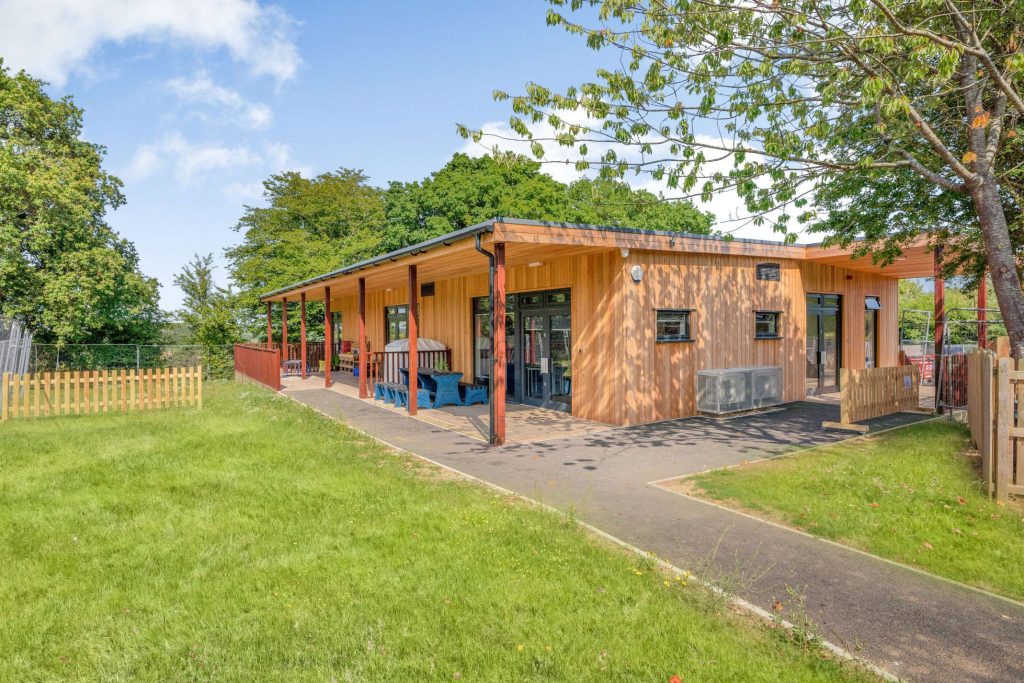Reinventing Our Learning Spaces: Getting Back to Nature with Biophilic Design
As the UK continues to suffer the aftereffects of the pandemic, now compounded by the cost of living crisis, children and young people are carrying a heavy burden which is having a significant and damaging impact on their mental well-being. Recent statistics show that, currently, one third of people aged 8 to 24 are reporting an increase in mental health and wellbeing issues and as many as 10% of those aged between 5 and 16 have a clinically diagnosable mental health problem.
The issue is perhaps one of the greatest challenges facing schools, teachers and those working in higher education but it receives very little attention as debates rage about funding pressures, energy bills, curriculum changes and the need for a reformulation of the exam system. Very little discussion is had concerning the simple fact that a mentally ill, or unhappy, child or young adult is going to find it difficult to engage with, and thrive within, the education system. Clearly, there is no easy fix, however, the classroom space in which students learn can provide a significant boost to their mental well-being.

The positive effect of access to nature
The powerful and restorative impact that nature has upon our mental health is now widely recognised and, within the context of education, is now supported by a growing body of evidence such as a study between Aarhus University, Denmark and Proceedings of the National Academy of Sciences of the United States of America, which shows that children who grow up with greener surroundings have up to 55% less risk of developing various mental disorders later in life.
Allowing children to routinely experience nature both within and outside of the classroom will significantly improve their mental well-being, ability to learn and, ultimately, their educational outcomes. One way to unlock this power is by applying biophilic design principles to the buildings within which they learn.

The concept of biophilic design
Biophilic design uses architectural techniques that integrate natural elements into a building at every opportunity, enabling its occupants to effortlessly connect with nature. The practice has three major components:
- Nature in the space. This will include maximising the natural light in the interior and ensuring fresh air flow, while also incorporating natural elements such as potted plants, green walls and aquariums.
- Natural analogues. Wherever possible, a building should be constructed using natural materials such as timber or stone, which can be augmented by the use of shapes, patterns and colours reminiscent of natural forms. These elements can be further enhanced with photographs, murals and other artwork depicting nature.
- Natural space simulation. Spatial configurations should aim to mirror spaces that are found in natural surroundings, to which we are inherently drawn, such as cosy nooks, open expansive spaces and meandering pathways and corridors.

Classrooms with biophilic design elements have been proven to enhance the learning experience for children
Biophilic design in classrooms has been shown to stimulate students’ willingness and ability to learn by encouraging development in a number of key areas:
- Sensory and motor development. Adding sensory elements from the living, natural environment can help inspire curiosity, imagination and discovery in students.
- Stress and fatigue. Noisy, open-plan classrooms can be mentally exhausting but respite can be achieved by exposure to nature.
- Cognitive ability and emotional well-being. This can be significantly increased by designing or embedding nature into learning environments.
- Attention spans and ADHD behaviours. Classrooms that incorporate biophilic design offer significant benefits to learning, including increased attendance, higher test scores, improved behaviourand increased focus.
One of the studies supporting these claims was conducted by A Sigman who was able to show that children exposed to nature:
- Scored higher on concentration and self-discipline
- Demonstrated improved awareness, reasoning and observational skills
- Performed better in a wide range of topics and skills including reading, writing, mathematics, science and social studies
- Were better at working in teams
- Showed improved behaviour overall.
Another study by Human Spaces found that by optimising exposure to daylight, attendance can increase by more than three and a half days a year, whilst test scores can improve by between 5 and 14% and the speed of learning can be boosted by as much as 26%.
Simply putting plants in classrooms can also enhance spelling, maths and science performance by as much as 14%.

The materials used in construction also play a crucial role. Beloved of architects and builders for its flexibility, timber is not only the oldest and most sustainable building material in the world, but it also has other beneficial properties. Weitzer Parkett, ProHolz Austria and partners undertook a research project called ‘School Without Stress’ to try and scientifically demonstrate the advantages of using timber within a classroom and its long-term benefits for students who study within them. They found that, on average, children in a timber classroom had 8,600 less heartbeats per day than those in a traditional building: a clear sign that stress levels had been reduced.
Biophilic Building Design & Construction
There are a number of innovators who work hard to ensure biophilic principles are incorporated into their designs, material selection and build processes. TG Escapes are a leader in timber frame modular construction and they are dedicated to ensuring that, whenever possible, their projects incorporate biophilic principles, especially when the building is intended for educational use. When completing classroom designs, they feature natural materials, ensuring building layouts offer easy access to the outdoors whilst maximising natural light penetration into the interior space, to maximise the well-being of students and educational practitioners, in order to enhance learning outcomes.

Mark Brown from TG Escapes says: “Being close to nature can aid development in children. We know that exposure to nature enhances cognitive, emotional and moral development and feeling part of the living world can be restorative and calming, leading to contemplation and reflection. That creates ideal conditions for learning, not only in conventional educational contexts but in many other ways as well. We believe that it is incumbent on the architects, designers and building professionals who are creating educational spaces to leverage biophilic design principles to ensure that these spaces can achieve their mission as effectively as possible”
As a final footnote, the issues of environmentalism and sustainability are becoming increasingly important to many in the education sector, students and staff alike. Biophilic design and the use of timber in construction create buildings with a reduced carbon footprint, compared to structures built using other materials. Timber sequesters carbon. It can be easily paired with renewable energy sources and can work alongside a fabric-first approach and other environmentally friendly construction choices such as sedum roofing. Together with the use of the environmentally efficient modular construction process, this offers the possibility of buildings that are net zero in operation and in their lifetime. This means that schools choosing this option when new build opportunities arise will be benefiting pupils, present and future, whilst helping to preserve the environment for generations to come.
www.tgescapes.co.uk | IG: @tgescapes








